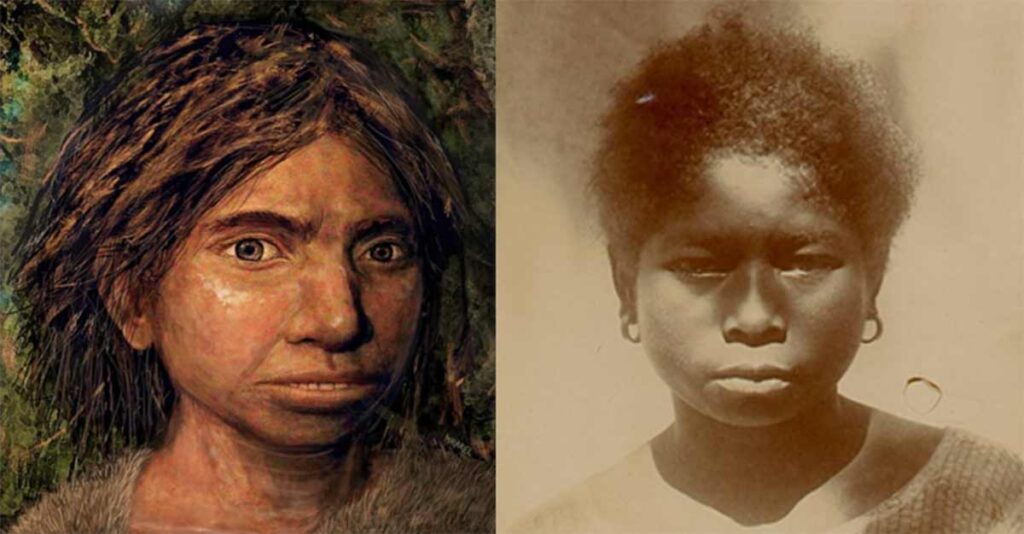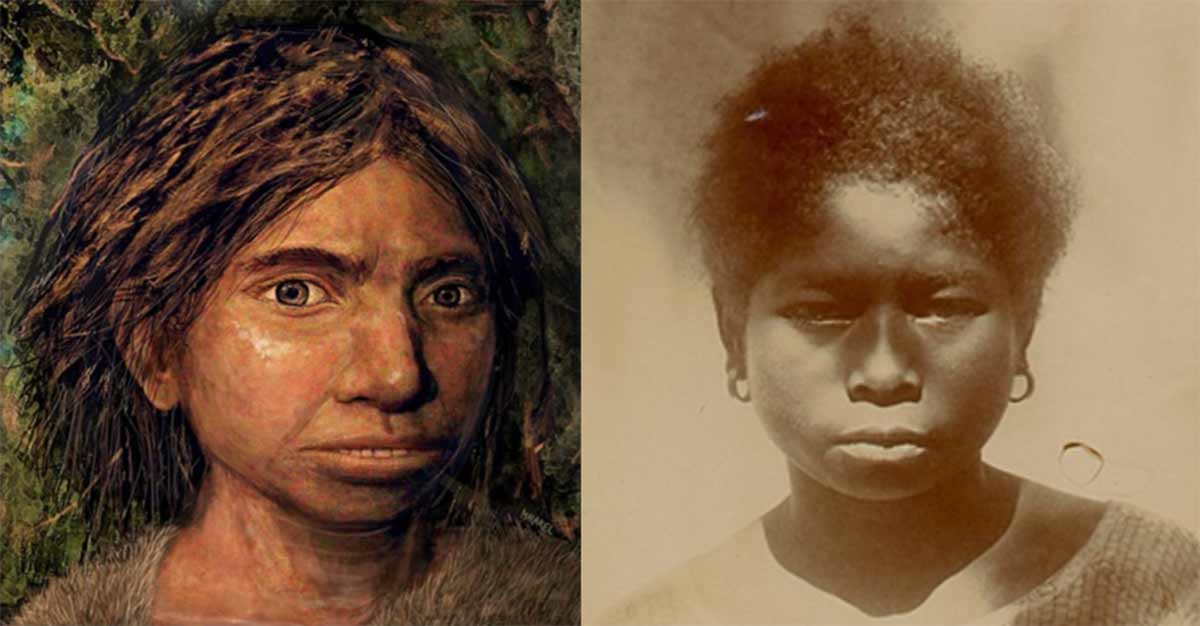

A small indigenous group surviving on the Bataan Peninsula on the Philippine island of Luzon has more Denisovan DNA than any other ethnic population in the world.
That is the conclusion of an international team of evolutionary geneticists, led by Maximilian Larena and Mattias Jakobsson from Uppsala University in Sweden, who recently finished examining more than 2.3 million genetic samples taken from 118 Philippine Island ethnic groups. Writing in the latest edition of the journal Current Biology, the scientists explain that they were searching for answers about humanity’s complex and fascinating evolutionary past, including the truth about its interrelationships with its hominin cousins, the Neanderthals and the Denisovans.
Out of this exhaustive study, the most remarkable finding to emerge is the discovery that members of a Philippine ethnic group known as the Ayta Magbukon inherited about five percent of their genes from the fabled Denisovans. This mysterious species of hominin was closely related to the Neanderthals and more distantly related to modern humans, and has only been detected in the fossil record in the faintest of traces.

In September 2019 scientists used epigenetics to work out the possible physical makeup of a Denisovan face. Their reconstruction won the 2019 Science magazine’s People’s Choice for Breakthrough of the Year. (© Maayan-Harel)
Previously, the highest percentage of Denisovan DNA had been found in the genomes of indigenous people from the highlands of Papua New Guinea (another Southeastern Asian island). But their Denisovan inheritance was more than 40 percent smaller than what the Ayta Magbukon are carrying.
According to Larena and Jakobsson, Denisovans living in East Asia sometime in the distant past (most likely more than 100,000 years ago) crossed the waters of the Western Pacific Ocean and settled on many islands throughout the region, including those of modern Papua New Guinea and the Philippines. For at least a while, they lived alongside various species of archaic humans, some of which have been identified through skeletal remains recovered during archaeological digs. Once modern humans left Africa they began quickly dispersing across the globe, and around 50,000 years ago they arrived on the same Pacific islands that were already occupied by the Denisovans.
When modern humans and Denisovans came into contact on the Pacific Islands of Southeast Asia, some amount of interbreeding occurred.
“This admixture led to variable levels of Denisovan ancestry in the genomes of Philippine Negritos and Papuans,” the study authors wrote in their Current Biology article.
The Ayta Magbukon are one of 25 subgroups of Philippine Negritos that still live on the Philippine Islands.
“In Island Southeast Asia, Philippine Negritos later admixed with East Asian migrants who possess little Denisovan ancestry, which subsequently diluted their archaic ancestry,” the authors continued, referencing a series of contacts believed to have occurred in the third century BC. “Some groups, though, such as the Ayta Magbukon, minimally admixed with the more recent incoming migrants. For this reason, the Ayta Magbukon retained most of their inherited archaic tracts and were left with the highest level of Denisovan ancestry in the world.”
Here as elsewhere, the Denisovans were outnumbered by Homo sapiens when the two species came into contact. Ultimately, this led to their extinction as a distinct and separate species. But their DNA was destined to survive indefinitely, and nowhere has more of it survived than in the genomes of the Ayta Magbukon people of the Bataan Peninsula on Luzon.

Aeta families, Luzon, Philippines, Oct. 1938 – Feb. 1939. (Egon von Eickstedt / CC BY-NC 2.0)
The Denisovans Remain with Us
Denisovans disappeared from the face of the earth approximately 40,000 years ago. Unlike the Neanderthals, they left behind only small indicators of their presence. This included a 40,000-year-old fossilized finger bone and a few fossilized teeth recovered from Denisova Cave in the Altai Mountains of eastern Siberia, and a 160,000-year-old jawbone found at Baishiya Karst Cave in Tibet.
This suggests their population size never grew very large and was likely confined to Eastern Eurasia. They likely boosted their population levels somewhat by migrating across the sea to various Pacific islands, where they would have lived safely and peacefully until modern humans arrived. It isn’t known whether relations between the island Denisovans and first human migrants were friendly or hostile, but these interactions did ultimately lead to the extinction of the Denisovans.
But while the Denisovans are long gone their DNA remains, firmly entrenched in the shared genetic heritage of modern human beings (Homo sapiens). The percentage of Denisovan DNA found ranges from one to two percent in most European, Asian, and North and South American populations, which is why the much higher percentages found in Western Pacific islanders is so notable.
When the first modern humans migrated out of Africa 50,000 to 60,000 years ago, they took up residence alongside Neanderthals in what is now Europe and Western Asia and Denisovans in what is now East and Southeast Asia. The other two species were created when the forerunner to Neanderthals, Denisovans, and Homo sapiens, known as Homo heidelbergensis, left Africa between 300,000 and 400,000 years ago. The wandering Homo heidelbergensis group split in two and moved westward and eastward, with Neanderthals and Denisovans evolving from the former subgroup and latter subgroup respectively.
Because all three species were distantly related, having all diverged from Homo heidelbergensis hundreds of thousands of years earlier, it was possible for each to interbreed with the others. While Neanderthals and Denisovans have been extinct for tens of thousands of years, in a sense they are still here, helping to shape the continuing evolution of modern humans.
The Mystery of the Missing Denisovan Skeletons
The presence of their DNA confirms that the Denisovans occupied the islands of Southeast Asia at one time. Curiously, however, their skeletal remains have never been found in these locations.
Individual skeletons of three forms of archaic humans have been discovered on various islands—Homo luzonensis on Luzon, Homo floresiensis on Flores (Indonesia), and Homo erectus on Java (Indonesia). But the Denisovans remain undiscovered.

The Denisova Cave, Siberia, where the discovery of a fragment of Denisovans has been confirmed. (Демин Алексей Барнаул/CC BY SA 4.0)
Unfortunately, soil conditions on tropical islands will cause ancient skeletal remains to decay rapidly, in comparison to other locations. Various skeletal fragments have been found in the Philippines and elsewhere that could be Denisovan, but the DNA in these fragments has decayed too much to allow it to be sequenced.
If verifiable Denisovan skeletal remains are never found on any Pacific or Southeastern Asian island, it could mean that their populations on those islands never grew very large. But it could also mean that the islanders acquired their Denisovan DNA in a different way than scientists currently believe.
While it seems most likely that modern humans arrived on the islands 50,000 years ago and interacted with the Denisovans then, it’s conceivable that the ancestors of those ancient islanders met and interbred with the Denisovans somewhere else. When the first human migrants came to the islands later on, they might have carried their freshly inherited Denisovan DNA with them.
The only thing that can be said with 100-percent certainty is that modern humans did interbreed with Denisovans at multiple locations and at different times. Those contacts led to the migration of Denisovan DNA into the collective human genome, where it has remained to this day.